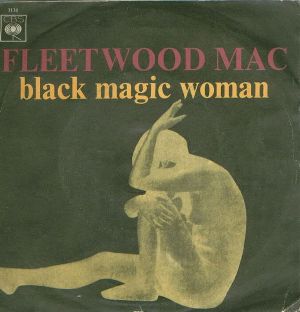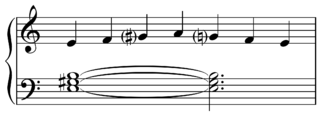Related Research Articles

Flamenco, in its strictest sense, is an art form based on the various folkloric music traditions of southern Spain, originating in the culture and traditions of the Calé Roma, commonly known in Spanish as Gitanos, of the region of Andalusia, but also having a historical presence in Extremadura and Murcia. In a wider sense, the term is used to refer to a variety of Spanish and Roma musical styles. The oldest record of flamenco music dates to 1774 in the book Las Cartas Marruecas by José Cadalso. Although Flamenco is often associated to the Gitanos of the Romani ethnicity who have contributed significantly to its origination and development, its style is uniquely Andalusian and flamenco artists have historically included Spaniards of both gitano and non-gitano heritage.
Farruca is a form of flamenco music developed in the late 19th century. Classified as a cante chico, it is traditionally sung and danced by men. Its origin is traditionally associated with Galicia, a region in northern Spain.

Siguiriyas are a form of flamenco music in the cante jondo category. This deep, expressive style is among the most important in flamenco. Unlike other palos of flamenco, siguiriyas stands out for being purely Romani (Calé) in origin. Siguiriyas are normally played in the key of A Phrygian with each measure consisting of 12 counts with emphasis on the 1st, 3rd, 5th, 8th and 11th beats as shown here:

Bulería is a fast flamenco rhythm made up of a 12 beat cycle with emphasis in two general forms as follows:
In flamenco a tango is one of the flamenco palos closely related in form and feeling to the rumba flamenca. It is often performed as a finale to a flamenco tiento. Its compás and llamada are the same as that of the farruca and share the farruca's lively nature. However, the tango is normally performed in the A Phrygian mode. In some English sources the flamenco tango is written with an -s; "the tangos is..."
The coladeira is a music genre from Cape Verde.

A flamenco guitar is a guitar similar to a classical guitar but with thinner tops and less internal bracing. It usually has nylon strings, like the classical guitar, but it generally possesses a livelier, more gritty sound compared to the classical guitar. It is used in toque, the guitar-playing part of the art of flamenco.

"Black Magic Woman" is a song written by British musician Peter Green, which first appeared as a Fleetwood Mac single in various countries in 1968. Subsequently, the song appeared on the 1969 Fleetwood Mac compilation albums English Rose (US) and The Pious Bird of Good Omen (UK), as well as the later Greatest Hits and Vintage Years compilations.

A palo or cante is the name given in flamenco for the different traditional musical forms.
The cantiñas is a group of flamenco palos, originated in the area of Cádiz in Andalusia. They share the same compás or rhythmic pattern with the soleá and are usually sung in a lively rhythm. They are normally sung in a major mode and have a festive mood.
This is a glossary of terms that relate to flamenco arts.
Palmas is a handclapping style which plays an essential role in Flamenco music. It used to help punctuate and accentuate the song and dance. Good palmas can be a substitute for music, such as in the corrillo at the end of a show. Good palmistas can assist the musicians by keeping a strong tempo, or the dancer by accentuating the end or beginning of a phrase. In any case, an understanding of palos is essential.
Bachata is a style of social dance from the Dominican Republic which is now danced all over the world. It is connected with bachata music.

Soleares is one of the most basic forms or palos of Flamenco music, probably originating among the Calé Romani people of Cádiz or Seville in Andalusia, the most southern region of Spain. It is usually accompanied by one guitar only, in phrygian mode "por arriba" ; "Bulerías por soleá" is usually played "por medio". Soleares is sometimes called "mother of palos" although it is not the oldest one and not even related to every other palo

Chants d'Espagne, Op. 232, is a suite of originally three, later five pieces for the piano by Isaac Albéniz. Prélude, Orientale and Sous le palmier were published in 1892, and Córdoba and Seguidillas were added in the 1898 edition. According to Günter Schulze, "Many...[of the works] have the flavor of the flamenco so beloved of Albéniz."[1]

In music theory, the flamenco mode is a harmonized mode or scale abstracted from its use in flamenco music. In other words the collection of pitches in ascending order accompanied by chords represents the pitches and chords used together in flamenco songs and pieces. The key signature is the same as that of the Phrygian mode, with the raised third and seventh being written in as necessary with accidentals. Its modal/tonal characteristics are prominent in the Andalusian cadence.
Tarantas and Taranto are two related styles (palos) of Flamenco music, that originated in the Andalusian province of Almería. Each is characterized by a shared modality and harmonic progression (Bm–A7–G–F-sharp), but differ significantly with respect to rhythm and meter. Tarantas is a cante libre, meaning that it lacks both a regular rhythmic pattern and a regular rhythmic unit. It can be sung or played, but not danced. Taranto, conversely, has a regular 2/4-meter, and is danceable. When played on, or accompanied by, the guitar, both palos have a unique and characteristic sound that is created, in part, by dissonances that result from the use of the guitar's first three open strings, in combination with harmonies and melodies based on the F-sharp Phrygian mode.
Soleá (Soleares) por Bulerías is a flamenco palo. This dance is the product of the intensification of the Soleá rhythm or the deceleration of the Bulería. This cante is an intermediate step between the Soleá and the Bulería but responds to the same rhythm of both.
Guajira (Flamenco) is a palo based on the Cuban Punto Guajira Cubana. It is in 12 beats and feels like it starts on 12. The guajira is a prime example of so-called cantes de ida y vuelta. The flamenco guajira is the adaptation to Melos flamenco of the Cuban point, the peasant point, a genre that brings together a series of songs called Guajiros that are grown in the rural areas of the island of Cuba. A guajira is simply a song for voice and guitar with a series of similar letras.
Josefa Díaz Fernández, popularly known as Pepa de Oro,, was a Spanish flamenco dancer and singer.
References
- ↑ "Aprendamos Flamenco: Tientos". Sara Martin Flamenco (in Spanish). 2015-01-15. Retrieved 2018-01-30.
- ↑ "Learn About Tientos | Ambiente Flamenco". www.ambienteflamenco.com. Retrieved 2018-01-29.
- ↑ "Solo Compás | Flamenco Compás Builder". www.flamenco-compas-builder.com. Retrieved 2018-01-30.
